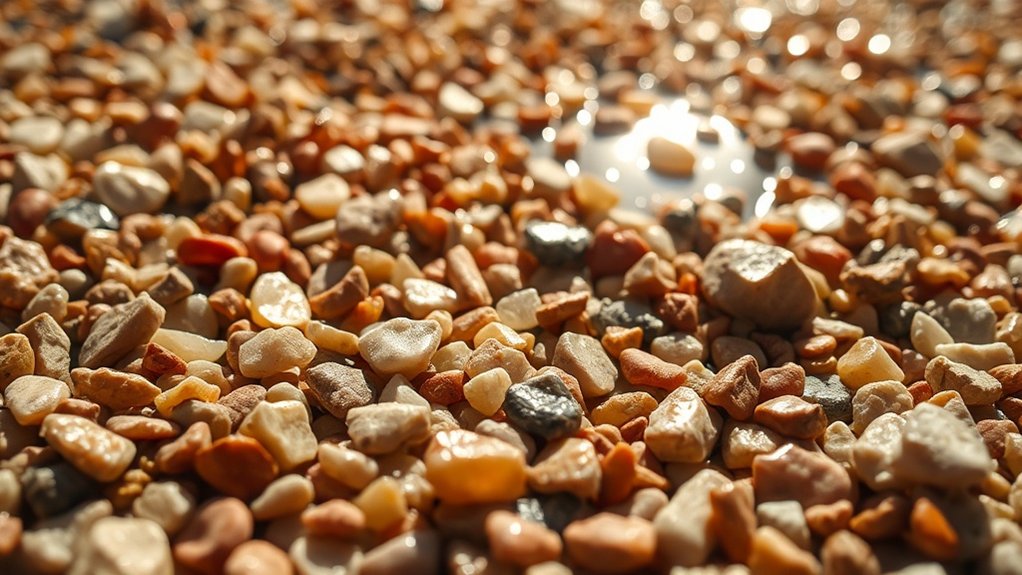The choice of aggregates significantly influences the cost of resin-bound gravel. Factors such as the type, size, and quality of aggregates directly affect material prices, installation efficiency, and overall project costs. For instance, natural stone aggregates tend to be more expensive, whereas recycled aggregates offer a more budget-friendly alternative. Using larger aggregates can also increase material usage and labour time, leading to higher expenses. Moreover, the type of resin chosen can impact long-term durability and maintenance costs. Therefore, it’s crucial to consider these elements for effective budget management. For further insights, keep reading.
Key Takeaways
- Natural stone aggregates tend to be pricier due to the complexities involved in sourcing and processing, unlike recycled aggregates which are often more affordable.
- The size of the aggregates can influence installation costs; larger aggregates usually require more materials and labour, leading to higher expenses.
- High-quality aggregates that undergo thorough drying and cleaning processes can significantly increase costs.
- Custom and specialised aggregates are more expensive due to their limited availability and the challenges in sourcing them.
- Aesthetic choices, such as bespoke colour blends, can also drive up costs, particularly when UV-stabilised resins are necessary to maintain vibrancy.
The Role of Aggregate Type and Quality in Pricing
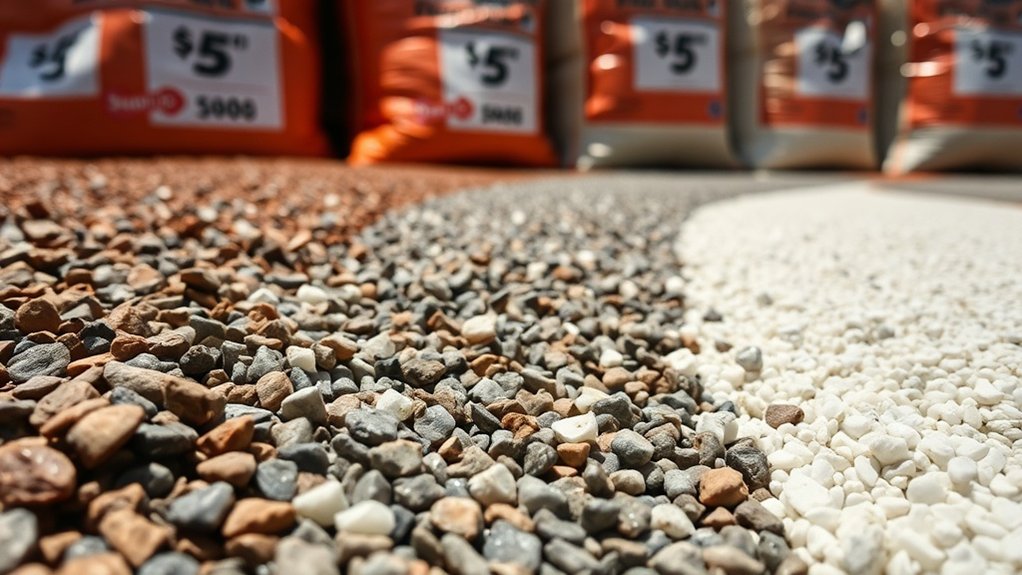
When choosing aggregates for resin-bound gravel projects, the type and quality of materials significantly affect pricing. Natural stone aggregates generally cost more due to the complexities involved in sourcing and processing them compared to recycled options. High-quality aggregates require careful drying and cleaning to ensure effective resin bonding, which adds to their cost. Additionally, the condition of the existing driveway surface can also impact preparation work, influencing the overall cost. Specialised aggregates, such as custom blends or those designed for better slip resistance, can also drive up prices due to their limited availability and higher processing demands. Furthermore, selecting angular stones for their strength and locking characteristics can enhance performance and longevity, justifying their added expense. Additionally, opting for imported or rare aggregates can increase expenses further, as shipping and import duties are factored in. Ultimately, the choices you make regarding aggregate sourcing will directly impact your overall project cost, so it’s crucial to make informed decisions to manage your budget effectively.
Impact of Aggregate Size on Installation Costs

Choosing the right aggregate size for resin-bound gravel projects significantly impacts installation costs. Understanding how aggregate size relates to installation depth and material consumption is essential for effective budgeting.
- Larger aggregates require thicker layers, which increases the amount of resin and materials needed.
- A thicker installation depth also means more labour hours, as larger aggregates can slow down the process.
- On the other hand, smaller aggregates allow for quicker installations, improving overall efficiency, especially when using washed and kiln-dried aggregates.
- Keeping a consistent aggregate size can help optimise both costs and performance. Additionally, average total cost for resin-bound gravel projects typically hovers around $2819.60, which can be influenced by aggregate choice.
If you go for larger aggregates, expect to see higher costs due to increased resin and labour. In contrast, smaller aggregates can lower material requirements and simplify installation, reducing overall expenses.
Always keep in mind how the choice of aggregate size affects your project’s budget.
Understanding Resin Types and Their Cost Implications
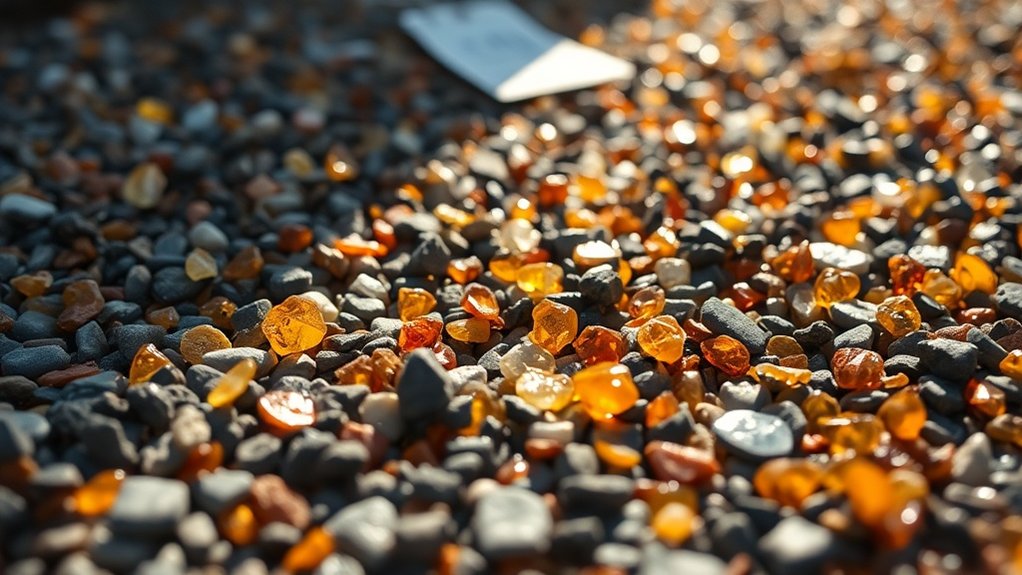
Understanding the various types of resins for resin-bound gravel systems is crucial, as each type has unique cost implications that can significantly impact your project’s budget and lifespan.
Polyurethane-based resins, although pricier, offer enhanced durability and UV resistance, which can reduce maintenance costs over time. In contrast, epoxy resins provide strong adhesion but aren’t UV stable, making them less suitable for outdoor use. For instance, UV-resistant resins like ResinBound UVR Pro help prevent discolouration and extend the lifespan of your surface, which justifies their higher initial cost. Additionally, selecting the right resin type can impact resin bound’s durability and overall effectiveness in various environmental conditions. Moreover, the use of UV-resistant resin not only enhances the longevity of the surface but also minimizes the risk of repair costs in the future.
Specialty resins designed for permeability and flexibility also tend to be more expensive. Ultimately, choosing the right resin type is essential for balancing upfront costs with long-term performance and maintenance needs.
Economies of Scale in Project Size and Cost
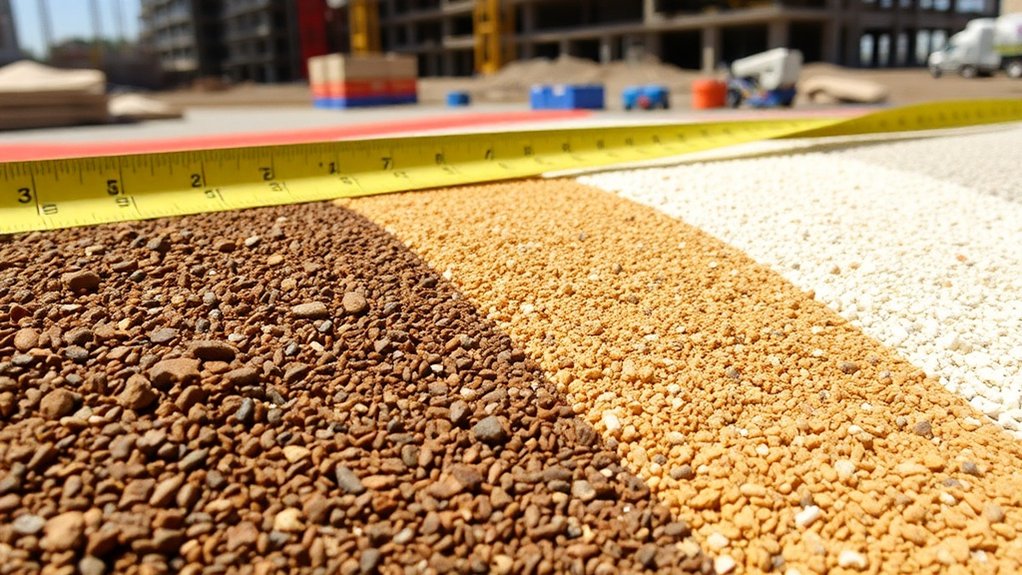
The choice of resin type significantly impacts project costs, but the size of the project is equally important in determining overall expenses.
Larger projects often benefit from economies of scale, which can enhance efficiency and substantially reduce costs.
- Bigger projects reduce the cost per square metre through bulk purchasing.
- Fixed costs decrease per unit as the area increases.
- Smaller projects tend to have higher per-unit costs, even if the material requirements are similar.
- Labour efficiency improves with larger projects, leading to lower overall expenses.
For instance, a large construction project might source materials in bulk, resulting in discounts, whereas a smaller project would pay more per item.
Aesthetic and Functional Properties of Aggregates and Their Effect on Price
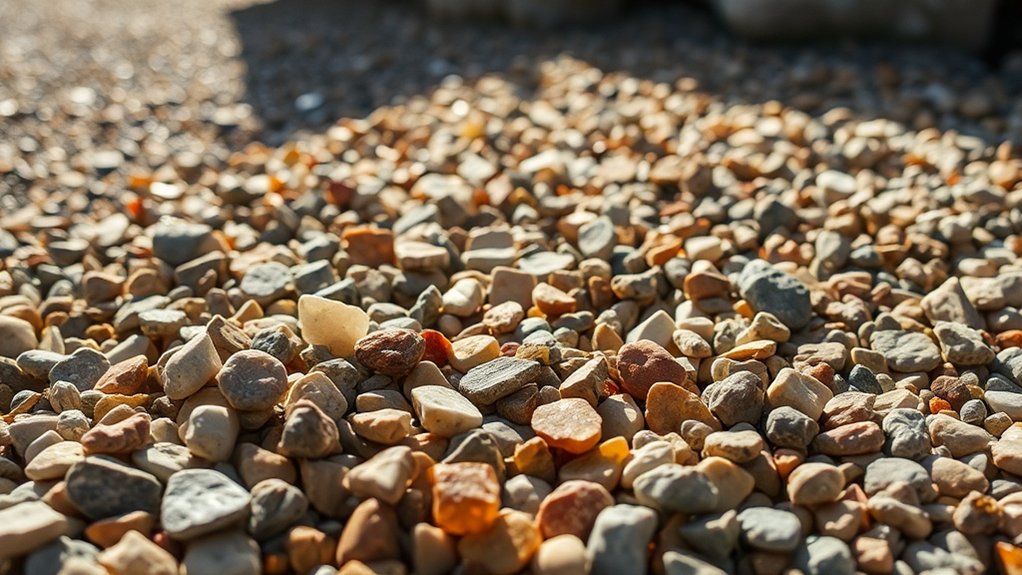
When choosing aggregates for resin-bound gravel, it’s important to consider both their aesthetic and functional properties, as these can significantly affect pricing.
Custom colour combinations can drive up costs due to the need for specialised sourcing and manufacturing. For example, popular colours like browns, greens, or metallic shades are visually appealing but often require UV-stabilised resins to keep their vibrancy, which adds to the expense.
Furthermore, the size and texture of the aggregates play a crucial role in surface durability; larger or textured aggregates can improve functionality but typically come at a higher price.
Striking a balance between aesthetics and performance factors, such as slip resistance and drainage capabilities, is essential. These decisions impact both the ease of installation and the long-term durability, helping to justify any premium pricing associated with high-quality aggregates.
Frequently Asked Questions
How Does Regional Availability Affect Aggregate Pricing?
Regional supply has a significant impact on pricing. When aggregates are plentiful in a local area, prices tend to fall because extraction and transport costs are lower. For instance, if a quarry nearby has a surplus of gravel, builders can access it cheaply. On the other hand, if local supplies are scarce, prices will rise sharply due to increased demand and higher transport costs. For example, if a construction project relies on aggregates from a distant source, those additional transport fees will be reflected in the final price.
What Are the Environmental Impacts of Different Aggregate Types?
Imagine a world where sustainable sourcing is the norm. Different types of aggregates have varying impacts on our ecosystems. For instance, recycled aggregates help reduce habitat destruction and water pollution. In contrast, using virgin materials can worsen air quality and lead to a decline in biodiversity. It’s crucial to make informed choices for the sake of our environment.
Are There Warranties Associated With Aggregate Quality?
Yes, warranties related to aggregate quality usually cover defects in materials and their durability. However, they often exclude problems caused by improper installation, lack of maintenance, or the use of aggregates that aren’t specified. These exclusions can affect how effective and applicable the warranty is. For example, if substandard aggregates are used, any warranty claims may be denied.
How Can I Reduce Waste During Aggregate Installation?
To reduce waste during aggregate installation, implement effective waste management strategies and accurate installation methods. Use mechanical mixing, adhere to recommended ratios, and carefully plan your batches to minimise excess and ensure optimal use of materials throughout the process. For instance, if you’re mixing concrete, measure your aggregates precisely to avoid leftover material.
What Maintenance Is Required for Resin-Bound Gravel Surfaces?
Resin-bound gravel surfaces can last over 20 years with the right maintenance. Regular cleaning is essential—sweep away leaves and debris to prevent build-up. Keep an eye out for weeds and remove them promptly. If spills occur, clean them up quickly to avoid damage. This simple upkeep not only extends the life of the resin but also keeps it looking great.
Conclusion
In conclusion, the selection of aggregates is crucial to the overall quality and cost of your resin-bound gravel project. Just as a good foundation supports a building, the right stones can enhance the appearance and durability of your surface. For example, using high-quality, vibrant stones not only improves visual appeal but can also affect your budget. By being mindful of these choices, you can ensure that your investment leads to a beautiful and long-lasting result.
